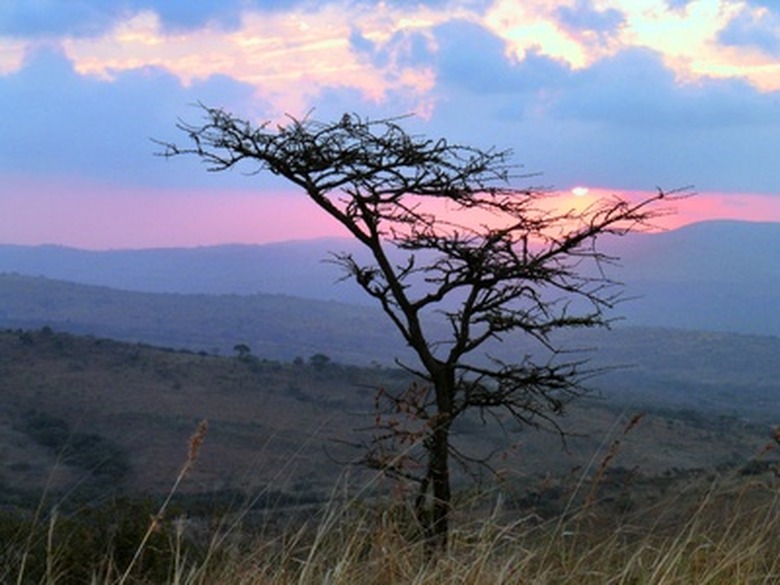Plants & Trees In The African Savannah
The African Savanna's tropical climate and vast open grasslands extend into over 25 African countries—from Ghana in the west, Ethiopia in the east and South Africa in the south. The multitudes of plants and trees throughout the African savanna beautify its landscape, are food sources for animals and humans and provide shade and shelter under the hot African sun.
Bermuda Grass
Introduced to the United States through the island of Bermuda, Bermuda grass (Cynodon dactylon) of the Poaceae or grass family originated in the African savanna and is now found as a choice grass for lawns, park grounds and fields around the world. Bermuda grass grows in moist to dry soils, maintaining its green color even during brief periods of drought.
Okra
Okra (Hibiscus esculentus) is native to the African savanna and grows in full sun. A member of the Malvaceae or mallow family, okra produces yellow or white flowers with dark centers that greatly resemble hibiscus flowers, as they belong to the same botanical family. Okra plants can grow up to over 6 feet tall and produces edible fruit cooked in many culinary dishes.
- The African Savanna's tropical climate and vast open grasslands extend into over 25 African countries—from Ghana in the west, Ethiopia in the east and South Africa in the south.
- Introduced to the United States through the island of Bermuda, Bermuda grass (Cynodon dactylon) of the Poaceae or grass family originated in the African savanna and is now found as a choice grass for lawns, park grounds and fields around the world.
Candelabra Tree
A member of the Euphorbiaceae or spurge family, the candelabra tree (Euphorbia ingens) is a highly poisonous tree that grows to 40 feet tall in the African savanna. Any contact with the tree's surface or sap is hazardous. The branches of this tree grow in a dense, upward manner, resembling a candelabrum, and its yellow flowers bloom during the winter months.
Gum Arabic
Also known as Senegal gum acacia, kher, kumta and Senegal gum, gum Arabic (Acacia senegal) is a thorny tree that reaches over 65 feet in height. A member of the Fabaceae (bean or pea) family, it produces cream or yellow flowers, followed by the formation of its yellow or brown seed pods. Gum Arabic is a drought-tolerant tree that produces sap—also known as gum Arabic—that is harvested from winter to summer for medicinal and food purposes. In the African savanna, the gum Arabic tree provides shade and shelter to many wildlife species.
- A member of the Euphorbiaceae or spurge family, the candelabra tree (Euphorbia ingens) is a highly poisonous tree that grows to 40 feet tall in the African savanna.
Baobab
Baobab (Adansonia digitata), native to the African savanna, can grow to over 80 feet tall. One of the world's largest trees, baobabs are long-lived, known to exist for several thousands of years. This tree is easily identified by its widened trunk base and its multi-branched stems that resemble underground roots. Baobabs offer several natural resources—its young roots and its leaves are edible, its bark is used to make ropes and fibers for basket weaving and its edible fruit is enjoyed by both animals and humans. Hollowed baobab trunks provide instant shelter, also used by animals and humans.
